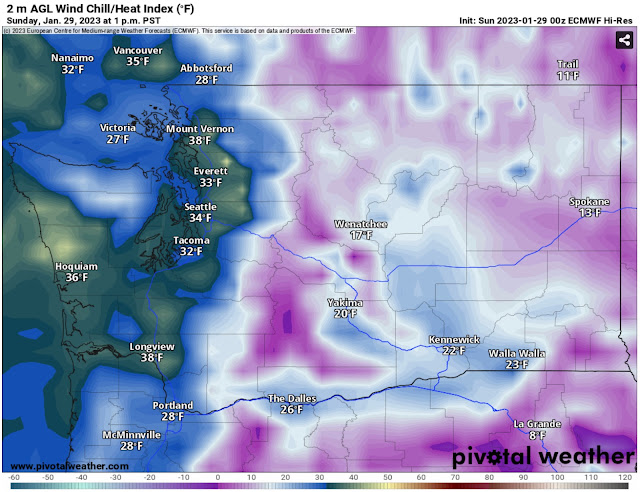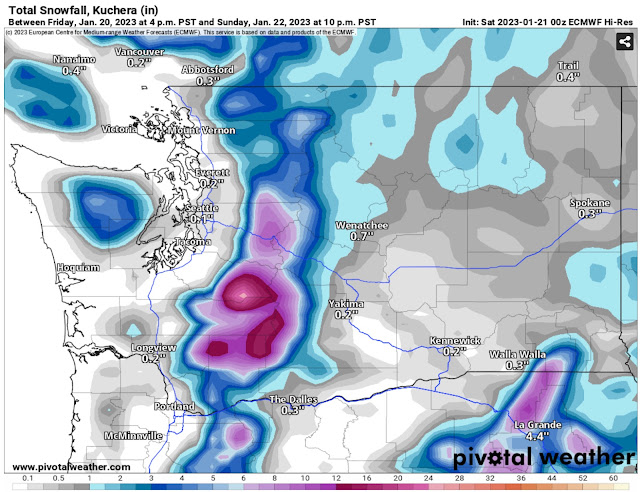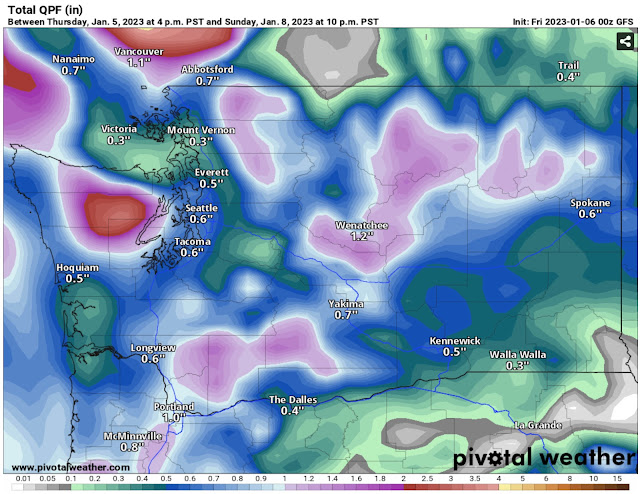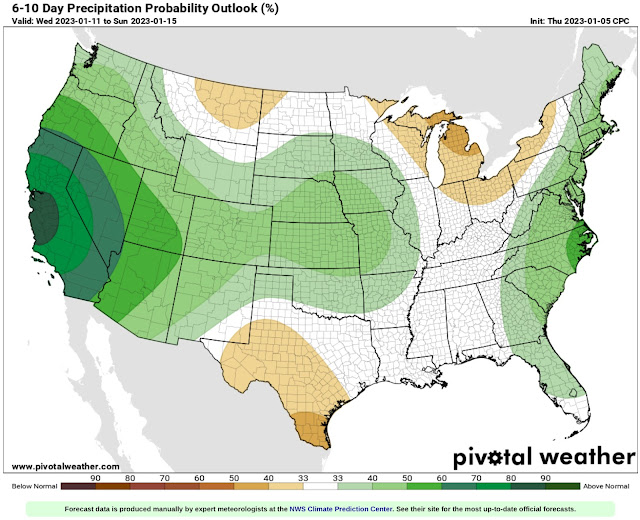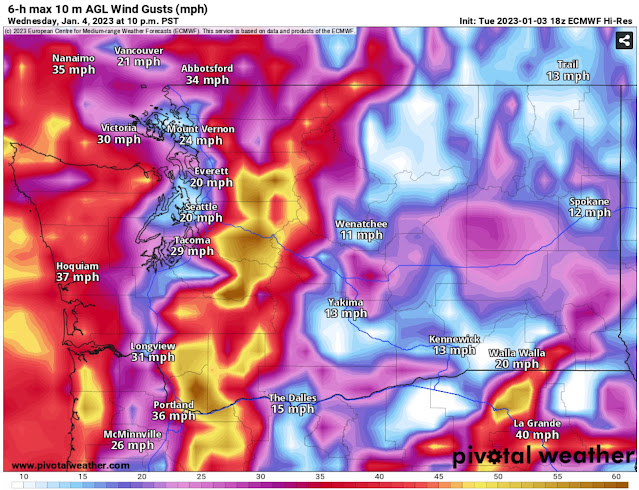FastCast—Wednesday, Feb. 1 to Sunday, Feb. 5:
After a frigid Monday morning and some surprise light lowland snow on Tuesday morning, weather will remain cloudy and calm through late Thursday. Expect highs in the upper 40s to low 50s, with some potential sunbreaks. Morning lows will be slightly warmer than the past few days, reaching the low to mid 30s. Conditions change on Friday, as a system will bring showers and breezy winds gusting 25-35 mph (40-50 mph possible from Everett to the San Juans). 0.2-0.5 inches of rain is expected across the lowlands, with 0.5-1 inch on the coast. The passes will receive 4-10 inches of snow by late Friday. Some uncertainty remains with the details. More systems are expected through the weekend and into next week. Warmer temperatures are also expected starting Friday, with highs in the upper 40s to low 50s and lows in the low to mid 40s.
——————————————————
Continue reading the full blog below!
We are now in a relative break in interesting weather, as we transition from cold and light snow to a more typical rainy/breezy pattern later this week.
The general pattern change can be seen below in the NWS Climate Prediction Center outlook for February 6-10.
This outlook shows a 40-50% chance of above average precipitation for Western Washington through the first week of February, a change from the drier-than-normal conditions that dominated January.
How much rain is possible? The potential totals from the European model through the next week (ends Tues., Feb. 7) are below.
If the European model’s forecast verifies, the lowlands can expect 1-1.5 inches of rain from Friday onward, with 2-3 inches on the coast.
Significant mountain snow is possible through the next week as well, but uncertainty is still high regarding amounts. As of the writing of this blog, anywhere from 1-3 feet is possible at the passes from Friday onward.
One more note…the surprise snow on Tuesday morning. This was due to precipitation from a weak front moving in while temperatures were around 30-32º. Was this in the forecast? Take a look at the European model’s forecast from early Tuesday morning.
The European model accurately showed light snowfall from near Tacoma northward to Vancouver BC.
This was accurate, as seen in my photo from Federal Way on Tuesday morning.
Light snow covered most roofs, some side streets, and grassy surfaces. No more lowland snow is in the forecast for now, but those in the mountains should be prepared for quite a snowy first half of February.






